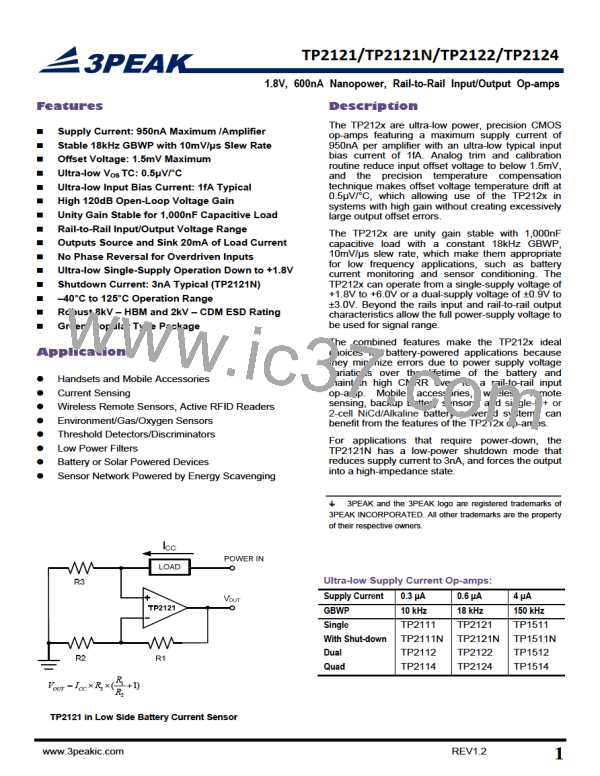TP2121/TP2121N/TP2122/TP2124
1.8V, 600nA Nanopower, Rail-to-Rail Input/Output Op-amps
Figure 5: Buffer pH Probe
Portable Gas Sensor Amplifier
Gas sensors are used in many different industrial and medical applications. Gas sensors generate a current that is
proportional to the percentage of a particular gas concentration sensed in an air sample. This output current flows
through a load resistor and the resultant voltage drop is amplified. Depending on the sensed gas and sensitivity of the
sensor, the output current can be in the range of tens of microamperes to a few milli-amperes. Gas sensor datasheets
often specify a recommended load resistor value or a range of load resistors from which to choose.
There are two main applications for oxygen sensors – applications which sense oxygen when it is abundantly present
(that is, in air or near an oxygen tank) and those which detect traces of oxygen in parts-per-million concentration. In
medical applications, oxygen sensors are used when air quality or oxygen delivered to a patient needs to be monitored.
In fresh air, the concentration of oxygen is 20.9% and air samples containing less than 18% oxygen are considered
dangerous. In industrial applications, oxygen sensors are used to detect the absence of oxygen; for example,
vacuum-packaging of food products.
The circuit in Figure 6 illustrates a typical implementation used to amplify the output of an oxygen detector. With the
components shown in the figure, the circuit consumes less than 600nA of supply current ensuring that small
form-factor single- or button-cell batteries (exhibiting low mAh charge ratings) could last beyond the operating life of
the oxygen sensor. The precision specifications of these amplifiers, such as their low offset voltage, low VOS TC, low
input bias current, high CMRR, and high PSRR are other factors which make these amplifiers excellent choices for this
application.
I
O2
VOUT 1Vin Air ( 21% O2 )
IDD 0.7uA
Figure 6
REV1.2
www.3peakic.com
12

 3PEAK [ 3PEAK ]
3PEAK [ 3PEAK ]